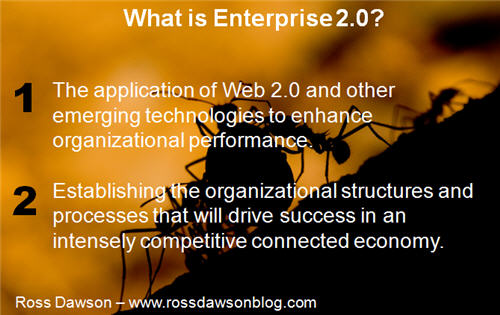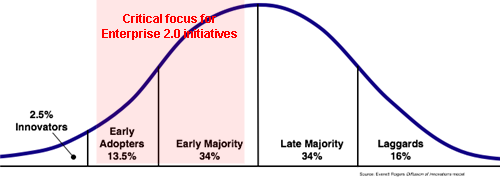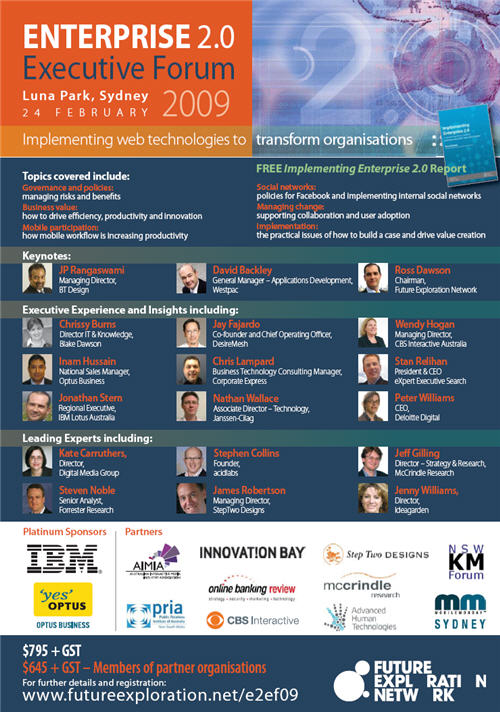Blogging and Twittering at Enterprise 2.0 Executive Forum
Enterprise 2.0 Executive Forum is on tomorrow in Sydney (my regular readers might be glad that I’ll be a little more diverse in my blogging activity after that :-) ). Everything has come together extremely well, both on the fantastic content and speakers, and in getting extremely good attendance, showing that Enterprise 2.0 is squarely on the agenda for corporate Australia even in challenging economic times.
For those attending (and those who can’t make it who would like to pick up crumbs from the rich smorsgabord of insights on the day…)
Twitter hashtag for the event is #e2ef.
The event twitter stream is here – already under way with a lot more activity starting 21 hours from now.
The event blog is at www.futureexploration.net/e2ef/blog/
Anyone attending can get a login to post. We expect as usual to get significant activity on the blog on the day and after the event.
There have already been quite a few blog posts in the lead up to the Forum, as below. Expect a lot more great discussion during and after the event!
Des Walsh 1: Enterprise 2.0 Executive Forum With Coveritlive
Des Walsh 2: Ross Dawson’s Stimulus Package: Enterprise 2.0 Executive Forum 09
Gavin Heaton: Implementing Web Technologies to Transform Organisations
Technation Australia: Enterprise 2.0 Executive Forum
Mick Liubinskas: Put the Oh in Enterprise 2.0
James Dellow: Don’t forget the Enterprise 2.0 Executive Forum
The Metaverse Journal: Growth predicted in virtual events for enterprise
Kate Carruthers: one more sleep until Enterprise 2.0 Executive Forum



